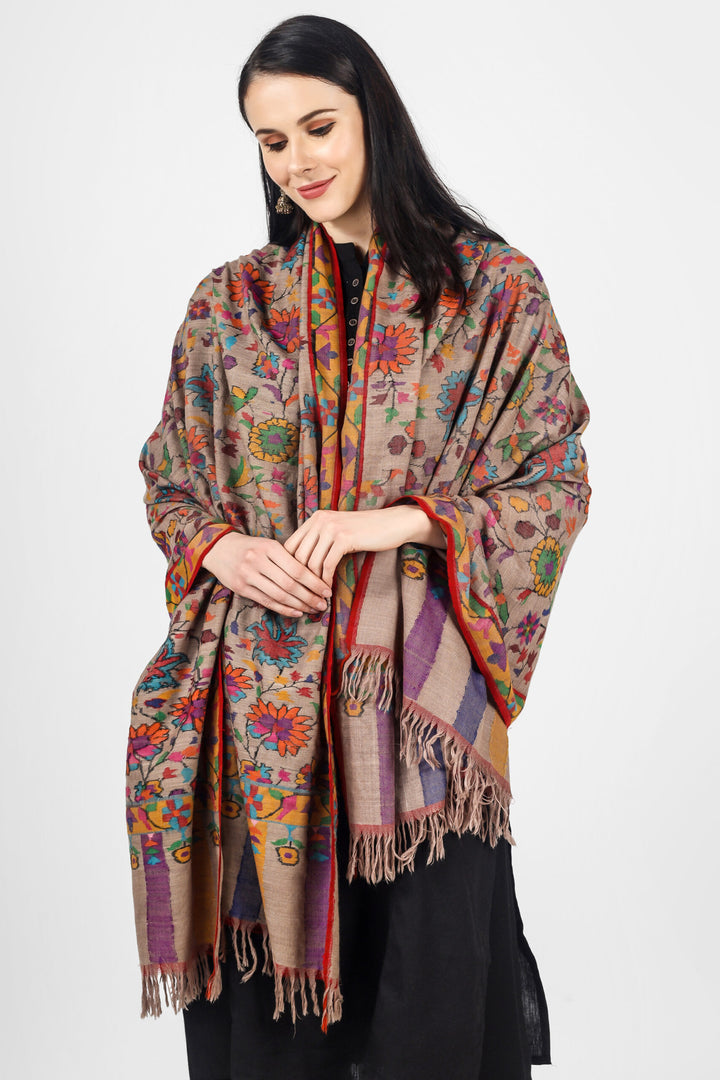Discovering the Intricacies of Kani Shawls: A Glimpse into Kashmir's Artistry
Nestled in the breathtaking region of Kashmir, where natural beauty and cultural heritage converge, lies a well-guarded secret - the exquisite Kani shawl. This remarkable piece of artistry has been woven into the fabric of Kashmiri culture for centuries, celebrated not only for its warmth and elegance but also for the intricate craftsmanship that brings it to life.
The Essence of Kani Shawls
At the heart of every Kani shawl is the finest Pashmina wool, sourced from the underbelly of Himalayan Pashmina goats. This wool is renowned for its extraordinary softness and insulating warmth, setting the stage for something truly exceptional.
Crafting the Kani Shawl
The journey of a Kani shawl begins with the careful cleaning and carding of raw Pashmina wool. This process ensures that the fibers are perfectly aligned, creating a smooth and uniform yarn. The fineness of the yarn is paramount, as it determines the shawl's delicate texture.
The next step involves the art of spinning. The carded wool is transformed into fine yarn, demanding precision and skill. The finer the yarn, the more exquisite the final product.
Dyeing the yarn is an integral part of the process. Using natural or synthetic dyes, the yarn is infused with a palette of earthy tones and rich hues, bringing it to life with vibrant colors.
The Kani Sticks: Guardians of Tradition
What sets the Kani shawl apart is the unique role of the Kani sticks. These slender, flat wooden pieces, traditionally crafted from willow, play a pivotal role in the weaving process. Notches are carefully carved into these sticks, serving as anchors for the yarn during weaving.
The Weaving Process: Where Artistry Blossoms
Weaving a Kani shawl is where true artistry takes center stage. The weaver, often working with meticulous precision, interlaces the dyed yarn using the Kani sticks to craft intricate patterns and motifs. These sticks are indispensable, allowing the weaver to control the placement of each thread with extraordinary finesse. The process is an intricate dance of colors and textures, demanding both skill and patience.
Completing the Masterpiece
Once the weaving is complete, the individual panels or sections are painstakingly assembled to form the full shawl. These sections are stitched together with unwavering precision to ensure that patterns align seamlessly.
The finished shawl then undergoes several finishing processes, including washing, blocking, and pressing, enhancing both its texture and appearance.
A Celebration of Kashmiri Heritage
Kani shawls transcend being mere garments; they are a testament to timeless beauty and cultural significance. Their intricate patterns draw inspiration from nature, Persian motifs, and traditional Kashmiri designs. These shawls offer not just warmth and luxury but also represent the rich heritage and craftsmanship of Kashmir.
Each Kani shawl is a masterpiece, a story woven with threads of heritage and craftsmanship. Owning one is like possessing a piece of Kashmir's cultural legacy, a reminder of the dedication, skill, and tradition that thrive in the heart of the Himalayas. A Kani shawl is not just a garment; it is a work of art that encapsulates centuries of culture and artistry.

Without a question, Pashmina merits being in the spotlight. Its exquisitely soft strands, which are hand-combed from the undercoat of Himalayan goats, combine to produce an unparalleled level of coziness and warmth in a shawl. Still, Kashmiri craftsmen are capable of much more than only pashmina (Belviera)..
ReplyDelete